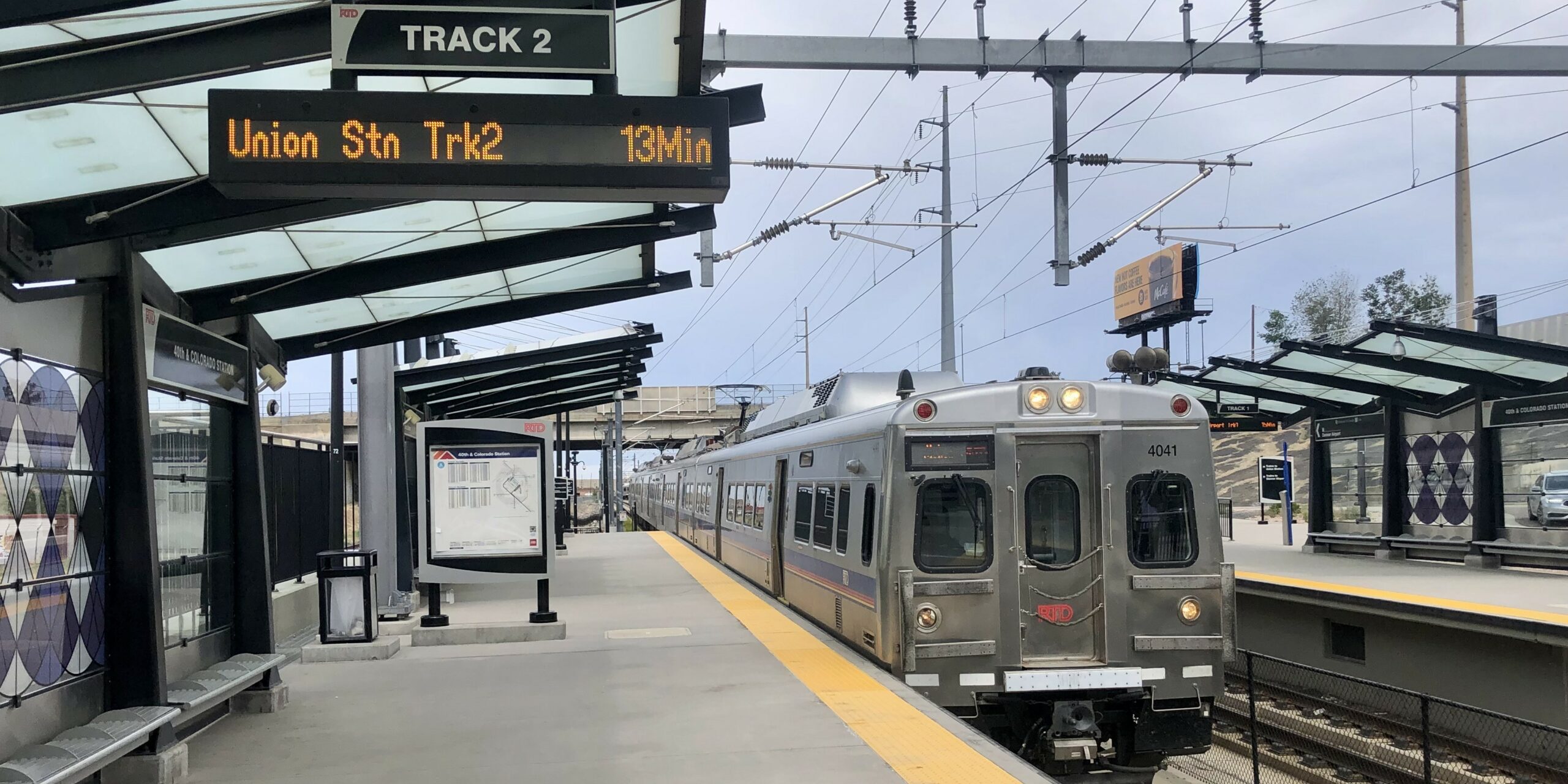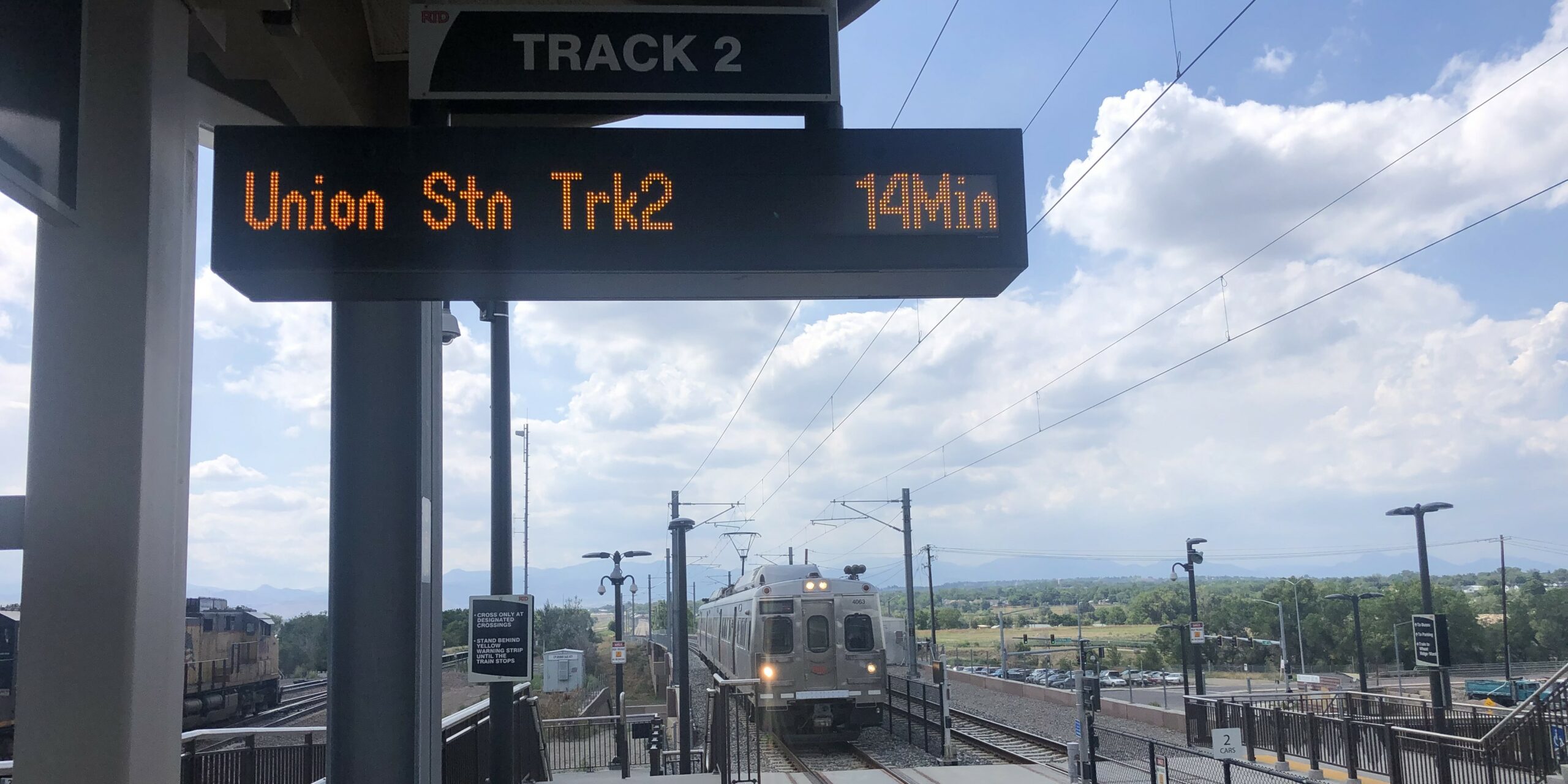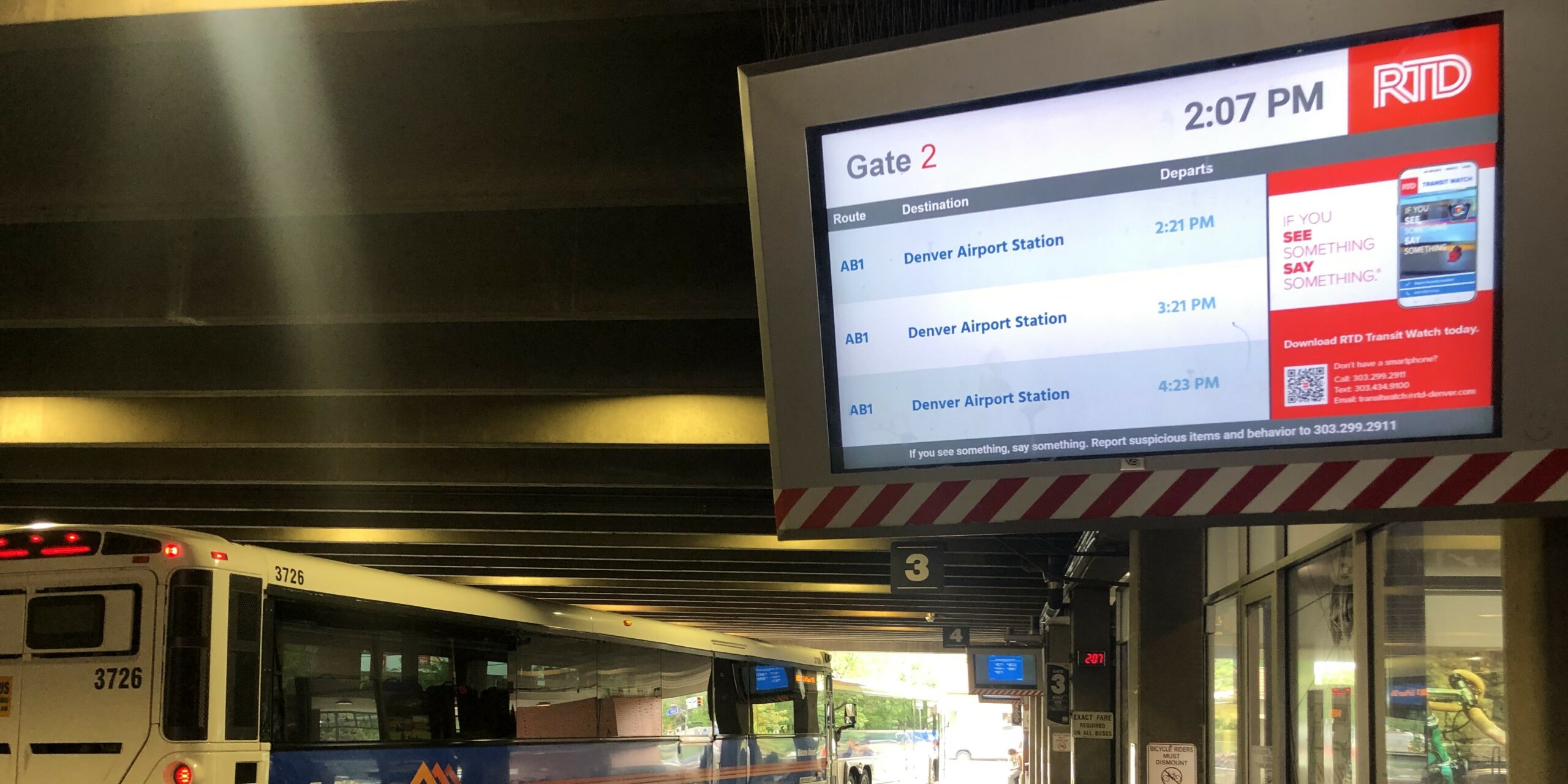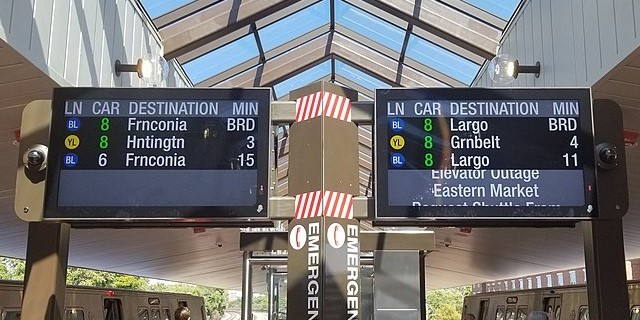GDT > Campaigns > RTD Commuter Rail Displays
The current Passenger Information System (PIS) displays on RTD’s commuter rail lines were specified and installed prior to the opening of the A Line in 2016. The light emitting diode (LED) displays are such that it is only practical display a single line of information, this is typically the next train departing.
The displays are used for two stages of the passenger information process. Firstly, they are placed in centralized areas at stations (e.g. by the ticket vending machines) as schedule displays to tell riders when and from which track their train is departing. Because they only have only have one line and can only show one train service at a time, they do this with severely limited effectiveness.
Secondly the displays are located on platforms to confirm to riders that they are waiting for their train at the correct track. They perform this function somewhat better, but again the ability to show one train service at a time is once again a limiting factor.
In addition to the display hardware not having the ability display sufficient amounts of information, the displays frequently show inaccurate and outdated information. This includes clearly wrong estimates of when the next train is due and cancelled trains not being shown.


A modern world class transit system should be easy to use and passenger information is key to this experience. We note that RTD has installed much more comprehensive PIS displays at its bus stations and along the Flatiron Flyer route. Other transit systems in both the U.S. and around the world are now offering their passengers much more information to help guide and reassure their riders that they will wait for the they’re transit service at the correct spot.


We call on RTD to initiate a project with their commuter rail system concessionaire, Denver Transit Operators (DTO) to replace all central waiting area and platform displays at their commuter rail stations, working in partnership with local cities such as Denver, Aurora, Arvada, Lakewood & Golden, key local stakeholders plus the State of Colorado as appropriate.
As seen on #RTDDisplays.